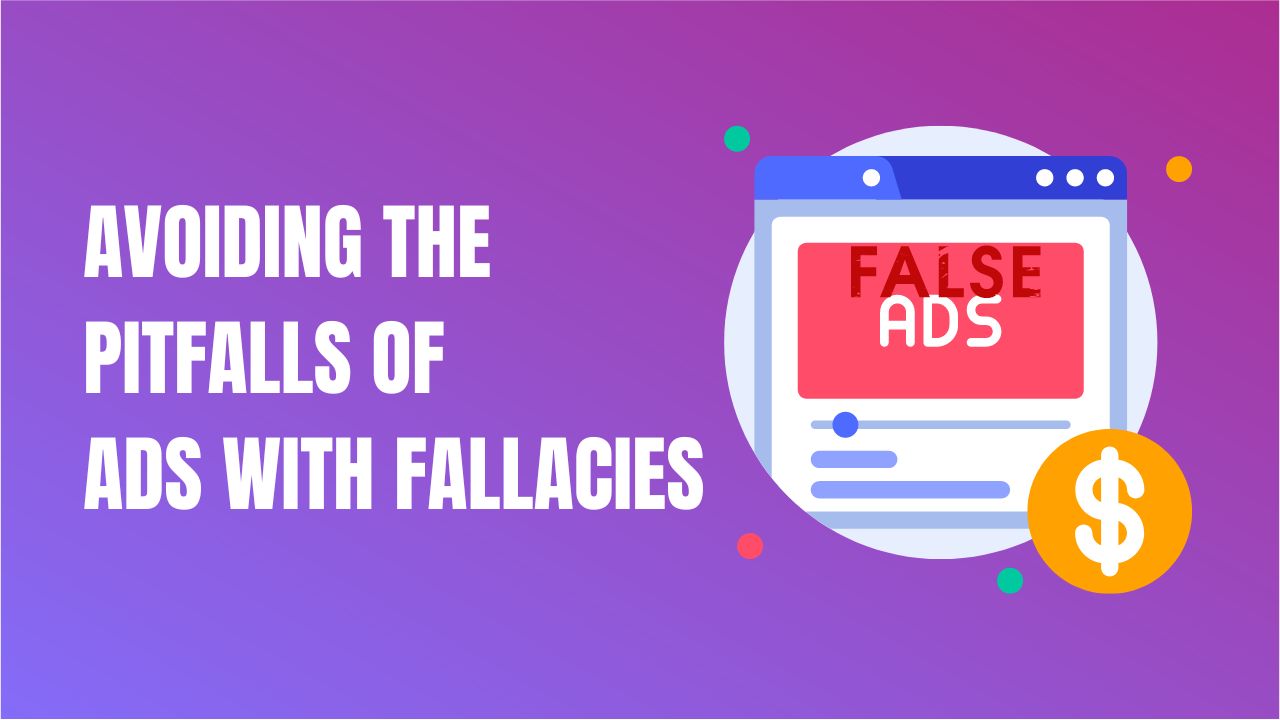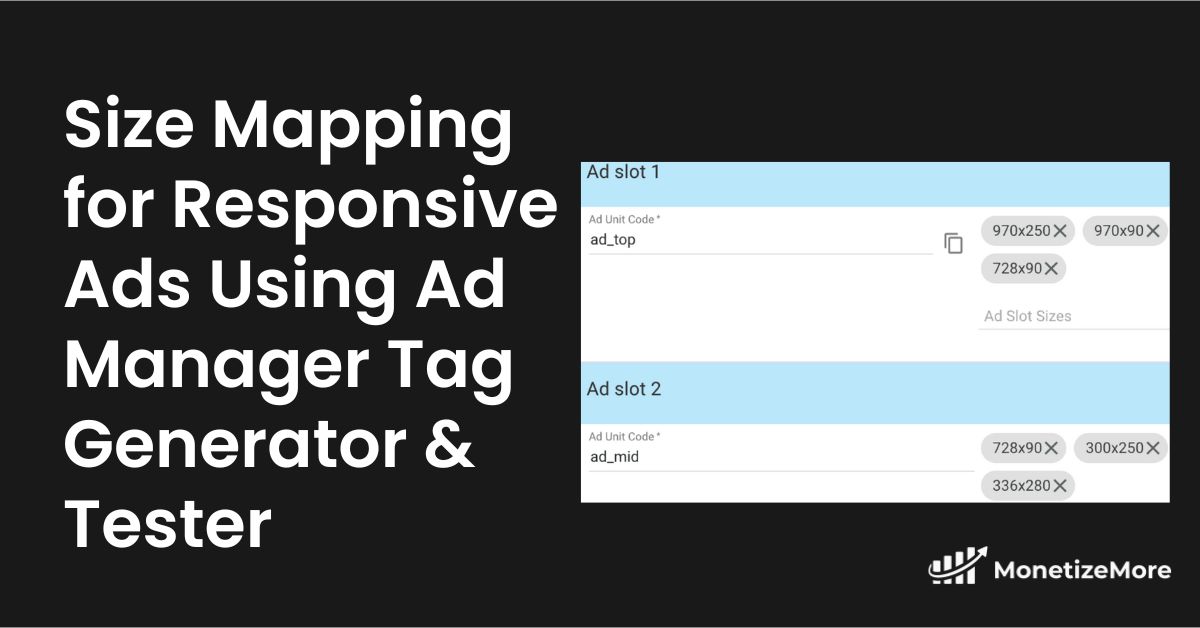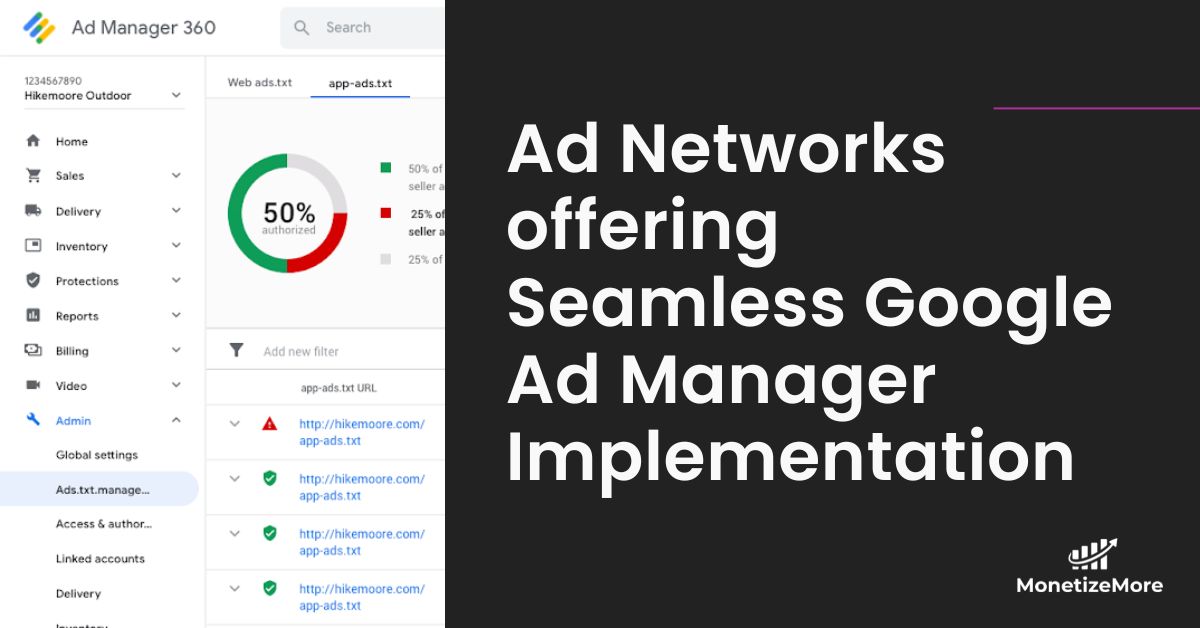
When it comes to advertising, fallacies are used regularly to persuade and influence consumers. While some of these are subtle, others are more obvious and can be easily identified. In this article, we will explore some of the most common examples of fallacies in advertising and the impact they can have on consumers and publishers alike.
Ads with fallacies are misleading or deceptive statements that are presented as facts, to influence consumers to buy a product or service. Advertisers often use this tactic because they know that consumers are more likely to purchase if they believe they are getting something that is valuable or worthwhile.
However, it is important to note that not all advertising is bad. Advertising can be a powerful tool for informing consumers about new products and services that may be of interest to them. The key is to be aware of the different types of fallacies that advertisers may use so that you can make informed decisions when making purchases.
One common type of fallacy is the appeal to emotions. Advertisers may use fear, guilt, or pleasure to try to persuade you to buy their product. For example, an advertisement for a home security system may use fear to convince you that your home is not safe without their product. Or, an advertisement for a luxury car may use pleasure to make you feel like you deserve the best.
Another common fallacy is the use of fake testimonials. Advertisers may use quotes or stories from satisfied customers to try to convince you that their product is worth buying. However, it is important to remember that these testimonials may not be representative of the product’s overall performance and that they may have been paid for or incentivized in some way.
![Ads with Fallacies: Avoiding the Pitfalls [10 examples included] MonitizeMore Ads with Fallacies: Avoiding the Pitfalls [10 examples included] MonitizeMore](https://www.monetizemore.com/wp-content/uploads/2023/05/sponsored-testimonials.png)
A financial advisor might use a fear-mongering fallacy to convince a client to invest in a certain stock. By playing on the client’s fears, the advisor may be able to convince them to make a risky investment that is not actually in their best interest. By understanding this fallacy, publishers can create content that presents financial advice in a more objective and informative way.
Exaggeration of claims is also a common fallacy in advertising. Advertisers may make bold statements about the benefits of their product without providing any evidence to back them up. For example, an advertisement for a weight loss supplement may claim that you can lose 10 pounds in a week without any diet or exercise. However, these claims are often too good to be true and may be impossible to achieve.
Misleading comparisons are another type of fallacy. Advertisers may compare their product to a competitor’s product in a way that is unfair or misleading. For example, an advertisement for a laundry detergent may claim that their product is “10 times more effective than the leading brand.” However, this claim may be based on a small sample size or a biased study.
![Ads with Fallacies: Avoiding the Pitfalls [10 examples included] MonitizeMore Ads with Fallacies: Avoiding the Pitfalls [10 examples included] MonitizeMore](https://www.monetizemore.com/wp-content/uploads/2023/05/misleading-ad-false-1024x302.webp)
Advertising fallacies can be tricky to spot, but it is important to be aware of them so that you can make informed decisions when making purchases. Remember to look for evidence to support any claims made by advertisers and to be skeptical of any emotional appeals or testimonials. By doing so, you can protect yourself from being misled by advertising fallacies.
![Ads with Fallacies: Avoiding the Pitfalls [10 examples included] MonitizeMore Ads with Fallacies: Avoiding the Pitfalls [10 examples included] MonitizeMore](https://www.monetizemore.com/wp-content/uploads/2023/05/fallacies-ads-1024x398.png)
Advertising is a required component of any business. It is how companies promote their products or services to potential customers. However, advertisers often use fallacies to persuade viewers to believe their claims. Fallacies are errors in reasoning that can make an argument seem more convincing than it is. Advertisers use fallacies because they know that emotions play a significant role in decision-making. By appealing to emotions, advertisers can create a sense of urgency or desire in the viewer, which can lead to increased sales.
One of the most common fallacies used in advertising is the appeal to authority. This fallacy involves using the endorsement of an expert or celebrity to lend credibility to a product or service. Advertisers know that people are more likely to believe something if it is endorsed by someone they respect or admire.
Another common fallacy used in advertising is the appeal to fear. This fallacy involves creating a sense of fear or anxiety in the viewer to persuade them to take action. Advertisers may use this tactic to convince people to buy a product or service that promises to protect them from a perceived threat.
To counter these fallacies, publishers need to take a critical approach to the advertisements they display on their websites. Publishers should verify the validity of any claims made in the ads and remove any content that is not genuine or violates Google AdSense guidelines. Publishers should also be aware of the different types of fallacies used in advertising and educate themselves on how to recognize them.
![Ads with Fallacies: Avoiding the Pitfalls [10 examples included] MonitizeMore Ads with Fallacies: Avoiding the Pitfalls [10 examples included] MonitizeMore](https://www.monetizemore.com/wp-content/uploads/2013/10/google-content-restrictions-1-1024x1024.png)
In addition to removing false or misleading content, publishers can also take steps to promote transparency and honesty in advertising. By working with advertisers who prioritize transparency and honesty, publishers can help to create a more trustworthy and ethical advertising industry. Publishers can also provide their readers with information on how to recognize fallacies in advertising and encourage them to be critical consumers.
Publishers can counter these fallacies by verifying the validity of claims made in ads, removing false or misleading content, and promoting transparency and honesty in advertising. By taking these steps, publishers can help to create a more trustworthy and ethical advertising industry.
Advertisers frequently use logical fallacies to persuade audiences. Here’s how they exploit the false cause, false dilemma, and slippery slope fallacies:
Using logical fallacies in advertising campaigns can have several advantages:
Advertising is designed to persuade, but sometimes it uses sneaky tricks called logical fallacies. Recognizing these can help you become a savvier consumer.
Here are some of the most common ones:
Fallacious ads can be misleading and may cause consumers to lose trust in the publisher’s content. This can lead to a decrease in website traffic and, ultimately, a decrease in revenue. One common type of fallacious ad is the “appeal to emotion” ad. These ads use emotional language and imagery to manipulate consume into making a purchase or taking a specific action.
![Ads with Fallacies: Avoiding the Pitfalls [10 examples included] MonitizeMore Ads with Fallacies: Avoiding the Pitfalls [10 examples included] MonitizeMore](https://www.monetizemore.com/wp-content/uploads/2023/05/ad-fallacies.webp)
While these ads may be effective in the short term, they can be harmful in the long term if consumers feel like they have been tricked into making a purchase. Another type of fallacious ad is the “false dilemma” ad. These ads present consumers with limited choices, often making it seem like there are only two options when in reality, there may be many more. This type of ad can be harmful because it can limit consumers’ ability to make informed decisions.
In addition to the potential harm to the publisher’s reputation and relationship with their audience, fallacious ads can also result in penalties from Google AdSense. AdSense has strict guidelines that publishers must follow, and violating these guidelines can result in a ban from the network. This can have a significant impact on a publisher’s ability to generate income from their website.
You need to understand ads with fallacies before creating content that resonates with your audience while upholding ethical standards.
Here are some key ethical considerations for advertisers aiming to build genuine connections:
Going forward, both advertisers and publishers must take responsibility for the advertising content they produce and promote. By being more aware of fallacies in advertising and taking steps to avoid them, we can create an online environment that is more trustworthy and beneficial for all involved. This means being transparent about the products and services being advertised, presenting claims realistically and accurately, and avoiding manipulative techniques that prey on the audience’s emotions or fears.
Fallacies in advertising are deceptive tactics designed to mislead consumers. They exploit our mental shortcuts and emotional responses to create a false sense of a product's value, urgency, or desirability. This manipulation aims to push consumers into making decisions based on faulty reasoning rather than accurate information. Examples include appeals to authority (using a false expert), bandwagon effects (implying everyone is using it), or creating a false dilemma (presenting limited options).
Using fallacies in advertising carries several significant risks like loss of trust, damage to reputation impacting consumer loyalty, decreased return on ad spend and legal troubles.
Programmatic advertising uses data and automation to efficiently buy and deliver targeted ads to the right people at the right time. It focuses on optimizing ad placement for results. Fallacies in advertising, on the other hand, employ misleading or deceptive techniques to persuade consumers, often compromising the ad's truthfulness. Unlike programmatic advertising, which is a tool within the advertiser's toolkit, fallacies raise ethical concerns about the advertisement itself.
Fallacies manipulate audiences and impact decision-making by exploiting emotions (like fear and desire), leveraging cognitive biases, and creating a false sense of authority or urgency. They use clickbait testimonials and bandwagon effects to establish credibility and encourage conformity. While effective in the short term, fallacies risk undermining trust and damaging the persuader's reputation in the long run.
It misleads consumers, erodes trust in the publisher's content, and leads to decreased website traffic. This harms the publisher's reputation and can make advertisers hesitant to work with them. Worst case, using fallacies can lead to legal action due to violations of consumer protection or advertising regulations. Prioritizing truthful advertising is essential for building long-term audience loyalty and a sustainable publishing business.
The bandwagon fallacy in advertising relies on an appeal to novelty and popular opinion. It plays on the human tendency to follow the crowd or conform to popular trends, suggesting that since everyone is doing something, the audience should also do the same.
The appeal to authority fallacy in advertising involves showcasing industry specialists or experts endorsing a particular product or service. Advertisers leverage the trust and value consumers place on recognized authorities to gain credibility for their offerings.
The ad hominem fallacy in advertising occurs when someone attacks the character, personal traits, or circumstances of a person making an argument rather than addressing the merits of the argument itself. It is used to discredit the opponent rather than engaging with the argument.
Relying on manipulative techniques in advertising can lead to risks such as eroding trust and credibility in the long run. While these techniques may yield short-term responses, they come with potential negative consequences for the advertiser's reputation.
The potential long-term consequences for publishers include losing the trust of their audience, decreasing website traffic, damaging their reputation, and potentially facing legal issues.
![Ads with Fallacies: Avoiding the Pitfalls [10 examples included] MonitizeMore Ads with Fallacies: Avoiding the Pitfalls [10 examples included] MonitizeMore](https://www.monetizemore.com/wp-content/uploads/2023/03/aleesha.jpeg)
With over seven years at the forefront of programmatic advertising, Aleesha is a renowned Ad-Tech expert, blending innovative strategies with cutting-edge technology. Her insights have reshaped programmatic advertising, leading to groundbreaking campaigns and 10X ROI increases for publishers and global brands. She believes in setting new standards in dynamic ad targeting and optimization.



10X your ad revenue with our award-winning solutions.